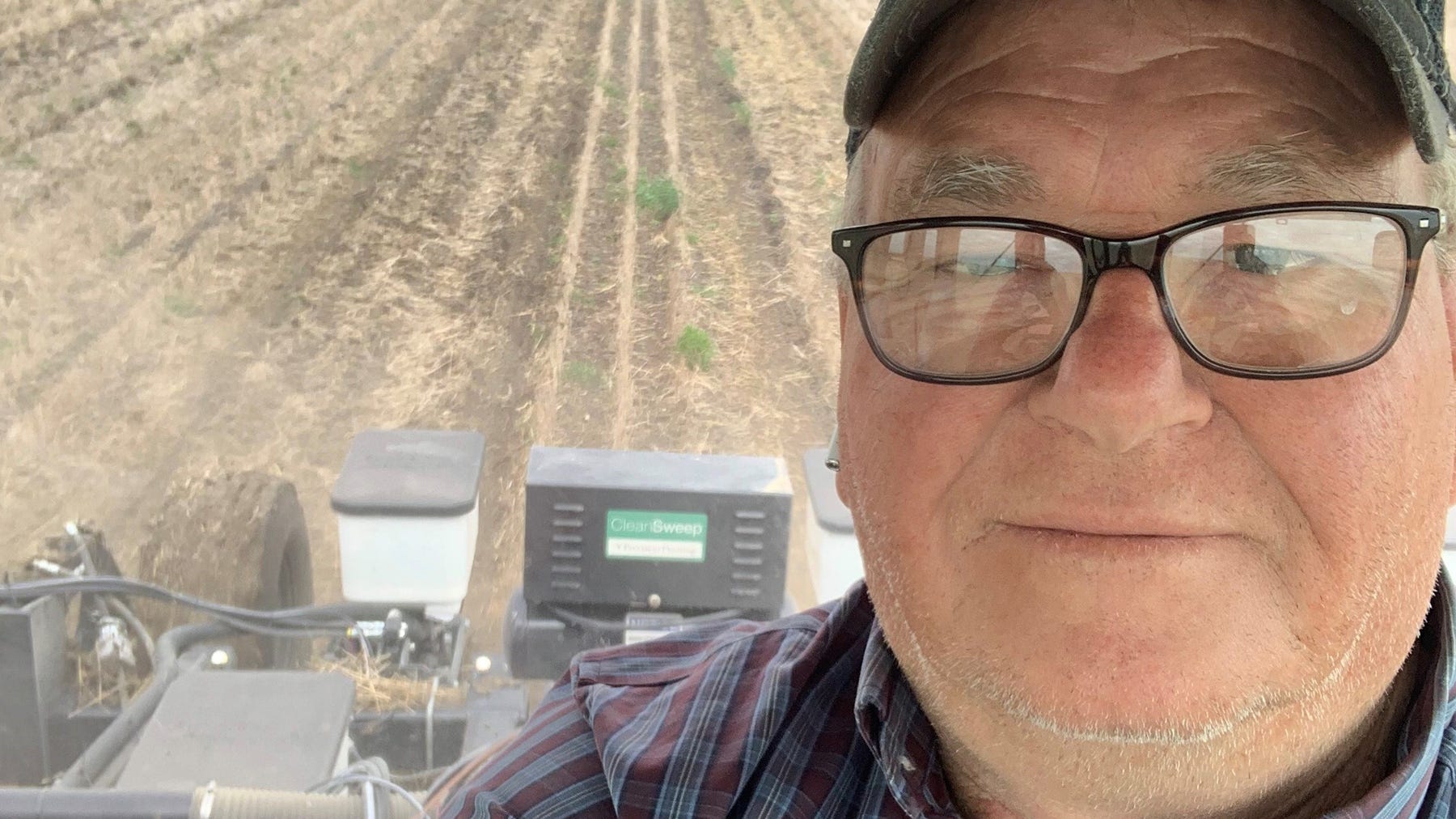March 22, 2024

by Simone Steiskal
In southeastern North Dakota, farmer Joe Breker embarked on a journey toward sustainable agriculture four and a half decades ago. His story is one of innovation, adaptation and a commitment to stewarding the land for future generations.
Breker shared his experiences with integrating cover crops and drain tile into his no-till farming practices, shedding light on the transformative impact these techniques have had on soil health and farm productivity.
His foray into cover crops began in the early 2000s as a response to managing excess water on his land in Havana. Recognizing the importance of “more plants growing more of the time to use excess water,” he embarked on a journey to integrate cover crops into his cropping system.

WATER FOCUS: For the last 45 years, Breker has been on a journey to sustainable agriculture. Water management through cover crops and drain tiling plays an important role in his focus on soil health.
However, he quickly realized that achieving successful cover crop establishment required more than just plants alone. Tiling, which he had no experience with, emerged as a crucial component in facilitating cover crop success.
Initial tile system
In 2005, Breker took the plunge and installed his first tile system, enlisting the help of experts from Ellingson Cos. The initial findings revealed a fair amount of salinity and saturated soils across his land — a condition that hindered both cash crop and cover crop growth. His intuition proved correct as he observed that just as crops struggled to thrive in these areas, cover crops faced similar challenges.
Over the years, Breker completed a dozen projects with Ellingson, each contributing to the improvement of soil drainage and farm productivity. The integration of drain tile systems proved to be a game-changer, exceeding Breker’s expectations in terms of improving soil drainage and facilitating cover crop establishment.
With drain tile providing the groundwork, he was able to incorporate salt tolerant cover crop seeds into his annual cropping system. These cover crops, along with other salt-tolerant crops, played a crucial role in rehabilitating saline soils and diversifying his crop rotation.
Breker’s approach highlights the importance of selecting cover crops that are well-suited to the soil conditions and management goals of the farm. By incorporating salt-tolerant covers such as barley, flax, oats, radish, rye and turnips, he was able to expedite soil rehabilitation and enhance overall farm resilience.
Furthermore, the use of cover crops as green manure not only improved soil health, but also contributed to reducing water runoff and enhancing water-use efficiency.
Despite the undeniable benefits of cover cropping and drain tile integration, Breker acknowledges that widespread adoption among farmers remains a challenge. While covers are gaining traction and are on many farmers’ radars, there is a level of commitment needed to implement these practices.
However, he remains optimistic about the future and believes that with increased awareness and support, more farmers will embrace cover cropping as a sustainable solution for improving soil health and farm profitability.
For Breker, the ultimate goal is to achieve zero water runoff in his tile lines, with the water used efficiently by plants to nourish the soil. He emphasizes that while drain tile provides a jump-start, it is the plants that do the real work in enhancing soil health and productivity.
A good cropping system, complemented by drain tile and diverse crop rotations, forms the foundation for sustainable agriculture — a legacy that he hopes to pass on to future generations.
Steiskal writes from West Concord, Minn.
You May Also Like




